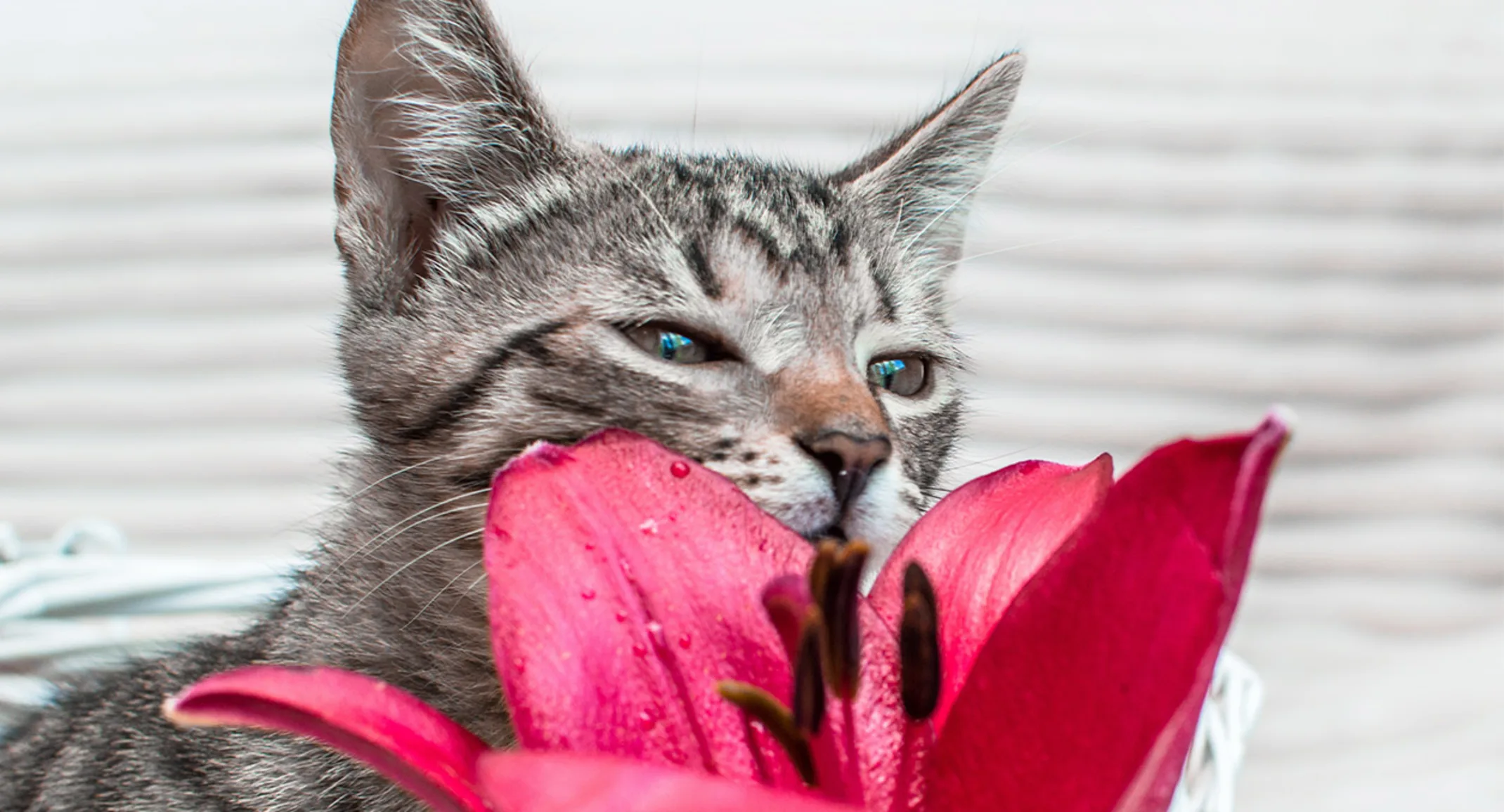How to Prevent Pet Toxicity
Tips and Tricks

You do everything to keep your pet safe, but to protect them from hazards, you must know what they are. You likely know chemicals can be toxic to your pet, and you keep them secure and out of their reach. Surprisingly, some pet toxins are not obvious, and many may be lurking in your home. Many everyday household plants, foods, and ingredients can have devastating—and deadly—consequences for your pet. Learn about common pet toxins, and how to keep your beloved companion safe.
Lilies can be lethal
Gardens and floral arrangements often include these beautiful, fragrant flowers, but lilies pose a serious threat to your pet’s wellbeing. A dog who eats lilies may experience minor stomach upset. However, a cat who ingests a tiny bit of any part of the lily—including the stem, leaves, flowers, and pollen, or even the water in which a lily has been placed—can develop fatal kidney failure. Lily toxicity signs can appear as late as 12 hours after ingestion, and may include:
Decreased activity level
Drooling
Vomiting
Appetite loss
Increased urination
Dehydration
Cats usually experience kidney failure within 24 to 72 hours of having ingested a lily component, and they can die if they are not treated. Even so, some cats who are treated end up with irreversible kidney failure. Because lilies are so dangerous for cats, do not bring them in the house or plant them in your yard. If you suspect your cat has eaten any part of a lily, immediately call your veterinarian or the American Society for the Prevention of Cruelty to Animals (ASPCA) Animal Poison Control Center.
Sugar substitutes are far from sweet
Xylitol (i.e., birch sugar) is a common sugar substitute found in sugarless gum, toothpaste, some peanut butters, and many other foods and products. While xylitol can benefit humans, this natural sugar substitute is toxic to dogs, and if they ingest this ingredient, their pancreas releases a large amount of insulin, causing a severe drop in blood sugar. Some dogs who ingest xylitol experience acute (i.e., sudden) liver failure, which is usually fatal. According to the Merck Veterinary Manual, cats are not at risk for liver damage from xylitol. Sugarless gum and mints are common xylitol-containing foods, but many other products that contain this pet-toxic ingredient include:
Baked goods
Cough syrup
Chewable vitamins
Mouthwash
Toothpaste
Deodorant
Pudding or gelatin snacks
Some peanut and nut butters
Over-the-counter medications
Dietary supplements
Sugar-free desserts
Initial xylitol toxicity signs may include lethargy, weakness, loss of coordination, vomiting, and seizures. If you think your dog has eaten a xylitol-containing food, immediately contact your veterinarian, or call the ASPCA Animal Poison Control Center for guidance. Depending on the amount of xylitol your dog has ingested, they may require hospitalization and medical monitoring.
Chocolate is delicious but can be deadly
Many people struggle to resist chocolate’s sweet temptation, but this tasty treat can detrimentally affect your pet’s health, and you must keep this food out of their reach. Chocolate contains caffeine and theobromine—two methylxanthines responsible for pet chocolate toxicity. Any chocolate can be harmful to your pet, but the more bitter the chocolate, the more toxic. Depending on the ingested chocolate’s toxicity level, toxicity signs can vary, and may include:
Vomiting
Diarrhea
Increased urination
Fever
Restlessness
Hyperactivity
Increased heart rate
If you believe your pet has ingested chocolate, immediately call your veterinarian to determine the best course of action. In some cases, at-home monitoring may be adequate. However, depending on the amount of chocolate your pet has ingested, your veterinarian may advise you to seek treatment at the nearest emergency veterinary hospital. To protect your pet’s health, ensure that everyone in your family knows they should not feed your pet chocolate, and store all chocolate in closed containers out of your pet’s reach.
Antifreeze is absolutely awful
A common chemical, antifreeze prevents damage to cars and pipes during freezing temperatures. However, this chemical’s active ingredient—ethylene glycol—is extremely toxic to humans and pets. When metabolized by the liver, ethylene glycol can cause severe kidney damage. Unfortunately, pets find this sweet fluid difficult to resist, and ingesting even a small amount can be lethal. A mere teaspoon can be lethal to cats, and one to two tablespoons can be lethal to dogs. Cats are also at risk for poisoning if any part of their skin contacts ethylene glycol, which is rapidly absorbed and can affect the kidney, brain, and liver. Antifreeze poisoning requires aggressive veterinary care, and can be deadly if left untreated. Contact your veterinarian immediately if you observe your pet ingesting antifreeze, or suspect they may have licked some off the ground. Early antifreeze poisoning signs include:
Nausea and vomiting
Diarrhea
Wobbly or uncoordinated movement
Disorientation
Increased heart rate
Weakness
Tremors
Fainting
Low body temperature
To protect your pet from antifreeze poisoning, keep the containers tightly closed and out of your pet’s reach, and immediately clean up spills. Always supervise your pet around vehicles or chemicals.
You may be surprised to learn that many everyday items in your home can be toxic to your pet. However, now that you are aware of the harmful effects these common plants, foods, and ingredients may have on your pet’s health, you can protect your beloved companion from them. Accidents do happen however, and if you suspect your pet has ingested a toxin, act quickly, and use this locator to find the emergency veterinary hospital nearest you.
